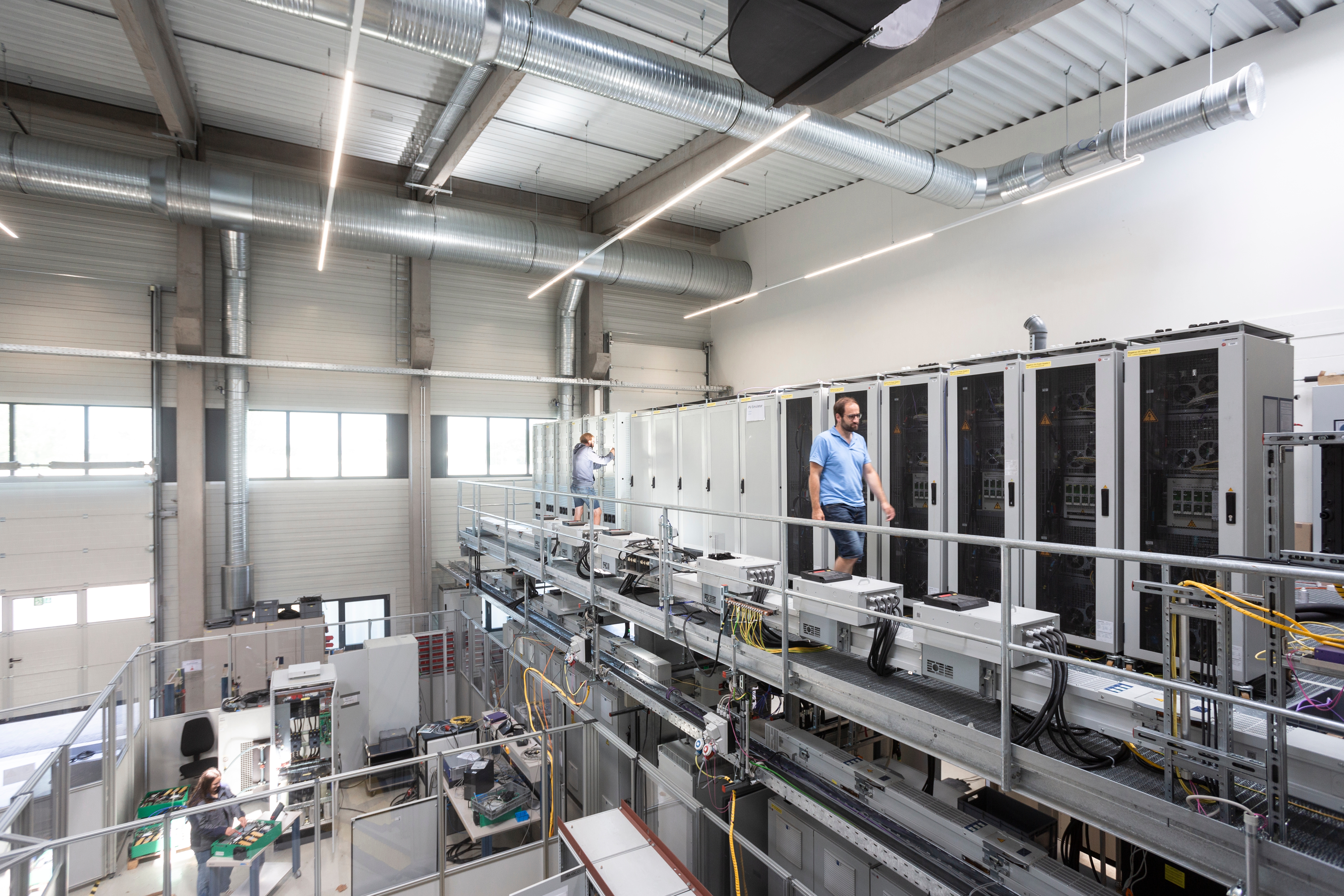News #2
Project "HV-MELA-BAT": High-Voltage Megawatt Charging System for Heavy-Duty and Passenger Vehicles
The battery charging infrastructure for electric heavy-duty and passenger vehicles plays a decisive role in a successful transition towards climate-friendly transport. As the required charging powers increase, so do the battery and charging voltages. The joint project "HV-MELA-BAT", coordinated by the Fraunhofer Institute for Solar Energy Systems ISE, aims to develop both the necessary power electronic converters and a contact system for high currents and voltages. A buffer storage is to ensure full charging power even at grid connection points with power limitations. The project partners are Motion Control & Power Electronics GmbH, STS Spezial-Transformatoren Stockach GmbH, Mercedes-Benz Energy GmbH and the Fraunhofer Institute for Transportation and Infrastructure Systems IVI.
"The project focuses on the further development of existing fast charging infrastructure based on the CCS standard towards the future Megawatt Charging System standard. This poses new challenges for both the power electronics and the contact system," explains project coordinator Dipl.-Ing. Stefan Reichert from Fraunhofer ISE.
Central aspects of the research project are the power electronic converters, the grid-side rectifier and the modular interconnection of DC/DC converters for galvanic isolation and for adapting the charging voltages to the vehicle battery. The system is to be supplemented by a buffer storage from automotive second-life batteries so that future charging stations can be used even when the grid connection power is low.
The aim is to make the system capable of addressing the widest possible range of charging voltages and vehicles, thus ensuring downward compatibility. Conceptually, the interconnection of up to four 250 kW charging points and the integration of regenerative power sources and sinks will also be investigated within the system.
The MCS charging system and the associated buffer storage will be built and evaluated at the Center for Power Electronics and Sustainable Grids at Fraunhofer ISE.
The intended goals of developing power electronic converters and the contact systems for future high-power charging infrastructure require them to process DC voltages of up to 1250 V and at the same time require the operation of efficient topologies and semiconductors as well as inductive transformers with very high frequencies.
High charging power, high charging voltage, high requirements
Increasing the charging voltage up to 1250 V allows high charging power at moderate charging currents. However, increasing the charging voltage requires the use of new efficient circuit topologies as well as appropriate semiconductor switches. The central power electronic converter, which provides galvanic isolation between the grid and the vehicle battery, is being developed and built by Fraunhofer ISE. It is to be both highly efficient and highly compact. In combination with semiconductor switches made of silicon carbide, high frequencies are to be achieved.
Since the requirements for inductive components (e.g., transformers) increase with the frequency, STS is developing a highly compact transformer for this purpose. The other power electronic converters, such as the active rectifier and a hard-switching buck converter, are contributed by the company M&P. Mercedes-Benz Energy GmbH is developing a modular buffer storage system from automotive second-life batteries especially for this application. Fraunhofer IVI is supplying a contact system that can contact currents greater than 1500 A.
The project is supported by the German Federal Ministry for Economic Affairs and Climate Action (BMWK) and will run until July 2025.
Last modified:
